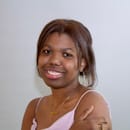As Black History Month comes to a close and as a first-generation Caribbean student attending college, I felt the need to share my experience for others to relate to as well as immerse themselves in a culture that is not their own.
Penn State has over 42,000 students currently enrolled and, of that large number, just over 4,000 students identify as Black. I knew before enrolling at this school that I would be in the minority of students attending in more ways than one. What I didn’t realize was just how much of a culture shock I would experience my first year here.
During my first few weeks here, no matter if I was in the classroom or the dining hall, I felt as if I could count the amount of people who looked like me. In the classrooms, I found that students and professors instantly remembered me, not for my name or my ideas but because of my skin color, which made me stand out.
Of the friends I did make, none could relate to what it was like to grow up in a Black household, but not for lack of trying. When I opened up to one of my friends about how I felt as if I would forever stick out like a sore thumb, she told me about the Paul Robeson Cultural Center, a resource she had learned about in one of her classes. It was there I felt as if my world opened up.
I joined BLUEprint, which is a peer mentoring organization for first-year and transfer students of color and help them acclimate to a PWI environment. I loved every minute of it and, to this day, most if not all of my friends that I see daily stemmed from being in that club.
While none of my worries disappeared overnight, it felt good to know that other people like me were or had been through some of the same experiences as me. Now, with only less one-and-a-half semesters left until I graduate, I can say that Penn State’s Black community might be a small percentage, but makes up for it with strength.
There is never a day that goes by when an organization is not having an event or discussion of some kind.
From predominantly Black academic clubs to Greek Life, there is truly something here for everybody, albeit if you know where to look. In sharp contrast from my first year to now, I can not walk through the HUB without running into someone I know in the community. I also feel that since the Black community is in the minority on campus there is a strong sense of looking out for one another and being there in each other’s time of need.
Again, I still struggle from time to time when I walk into a room and see that I am the only Black person in there, but after finding a community that supports and uplifts me, I realize that I’m not as alone as I once thought.


